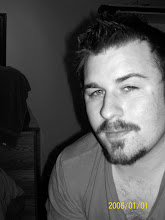Introduction
The University of Texas at Dallas Arts and Performance program is unabashedly setting out to widen the establishment's engineering and computer sciences pigeonhole with a faithful reproduction of the acclaimed 1997 Broadway hit Side Show. With an ensemble cast, dancing chorus, and orchestra, the musical spins the tale of two (one?) conjoined twins on their journey from sideshow attractions to national media darlings and their individual (shared?) quests for love and acceptance in depression- era America.
Music
The two and a half our performance displays the wide array of performing arts available to the musical going enthusiast. Newcomers to musical theater will be broken in with a sizable musical repertoire, from the raunchy and soulful The Devil You Know, to playful vaudevillian numbers like We Share Everything and One Plus One Equals Three (which have the peculiar attribute of being show tunes inside show tunes). The prominent lead voices are given ample room to explore the auditorium in solo; Private Confession and You Should be Loved showcase tenors Lakshman Manjunath and Bryan Thompson's range and ability to convey emotion through vocal timbre.
Concurrent with the theme of the story, Side Show's defining characteristic is the duet. Conjoined Siamese twin characters Daisy and Violet (Robin Clayton and Emily McCoy) progress through the story together at the hip and voice, in harmony. The moments in which the two sister's are at impasse or disagreement gives way to heterophonic vocals and gives more depth to the motif of 'unseparated individuality'. The recitative is fluid, and orchestral accompaniment allows both an ambiance during dialogue and punctuation of thematic phrasing.
Performers
From the opening number, the audience is beckoned to Come Look at the Freaks; a menagerie of misfits, oddities, and, well... freaks. The bearded lady, the geek, the snake woman, and the cannibal king, among others, are paraded in front of performers playing an audience. The recurring theme of being an audience looking at another audience watching the actual characters further underscores the separation of the 'freakish' from the 'normal'. The production also featured a small on-stage orchestral accompaniment. Chordophones, membranophones, and aerophones were integrated into the performance only aurally; they were well hidden behind circus sideshow themed props.
Audience
The April 16th performance brought a full crowd to the University Theater. The audience, not surprisingly made up of university students, friends, and family of the performers, remained engaged throughout the performance. The opening number did much to grab attention; the cannibal king rolled his way across the stage and into the audience, beating the ground and even the first row theater seating, snarling in face of amused audience members. The pseudo- simian display was backed by a tribal themed accompaniment by the orchestra, and served to attach the audience to a monstrous character that would later be revealed as all too human. The cannibal king, later redefined as Jake, unrequited lover of lead character Violet, had the audience's full sympathy and vocal reactions when he is refused his offer of love. The character is a role traditionally played by a black performer. It is unclear whether the audience made the observation of Jake's rejection as a racial matter; perhaps it was intended to remain ambiguous. Sideshow performer, or African American in the 1930's; which sort outsider was Jake rejected as?
Time and Space
The Friday evening performance of Side Show drew a large audience despite not being an opening or closing show. For the cast and crew however, the April 16th performance required special attention; it would be video recorded. An interview with performer Eli Aalderink (as the Geek) reflects this sentiment. "I'm glad I actually hit those falsettos!"
Conclusion
The University's production of Side Show stands as both a perfect introduction for many to the American musical and an example of how even a technical school can participate in the long tradition of a music culture.
Works Cited
Side Show. By Bill Russell and Henry Krieger. University of Texas at Dallas, Richardson. Apr. 2010. Performance.
Evans, Kathryn. Program notes. Side Show. 08 Apr 2010. Richardson: UT Dallas University Theater
Aalderink, Eli. Personal interview. 20 Apr. 2010.
Tuesday, April 27, 2010
Subscribe to:
Post Comments (Atom)

No comments:
Post a Comment